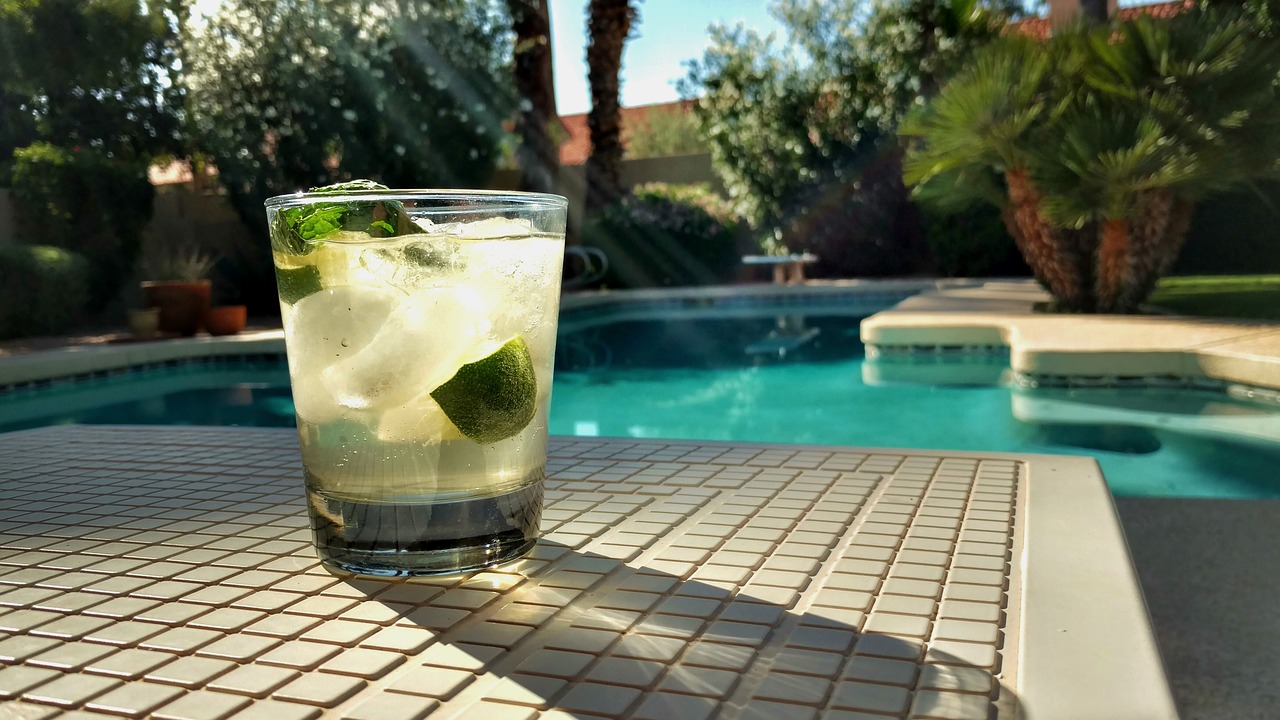
Recent decades have seen an explosion in new discoveries about soil health and its impact on agriculture. On a smaller scale, home gardeners are learning how to better nurture the microbiology in their gardens for better yields. In most North American gardens, that means keeping the soil covered during fallow times. But here in the South, when gardening is a year-round affair, your best bet is to take advantage of summer cover crops.
Along the Gulf Coast, in areas like Houston, New Orleans, and all throughout Florida, winter is an excellent time for farming and gardening. Although the rainfall may be a bit scant, the pest and disease pressure drops so dramatically that it’s worth it to irrigate.
This means that many Southern gardeners may miss a chance to sow important cover crops to restore organic matter to the soil. In other areas of the country, winter is the time for keeping plots fallow or sowing cover crops like hairy vetch, sudan grass, or clover. No one wants to leave a perfectly good garden bed fallow during its most productive season. That’s where summer cover crops come in.
Summer Cover Crops Are Effortless
In the South, summer is a great time to set your garden beds to fallow mode. While you may not be able to plant cool-season cover crops like winter rye, there are great alternatives for our warmer, wetter climates. As well as restoring structure to your soil and feeding the microbiology, it’s a good time to get out of the sun and avoid heatstroke. Summer cover crops don’t need weeding or watering.
Grab a mojito or a sweet iced tea, and let the bees and bugs have their time in the sun.
Finally Got That Round Tuit
In a previous post, I wrote that I would show you how I put a garden bed to rest for the summer. Although I am running pretty late this year, I did finally start to put the beds to, well, bed.
The first step was to put The Girls to work, digging up the weeds, aerating the soil, eating some bugs, and perhaps even leaving a few nitrogen bombs behind.
Adding Amendments
After letting the chickens loose a few times on the target bed, I add a few soil conditioners and some organic matter to the bed. The first bed is particularly deficient, because it’s a new area on top of what can only be called sand, rather than soil.
Because it will be sitting fallow for about two months, I won’t be digging it in. I’m going full Lasagna mode on this one. I normally prefer a no-dig approach to vegetable gardening for several reasons.
The first is because our barren, sandy Florida soil is already sparse with worms and other organisms that I don’t want to risk them by cutting through the turf and topsoil.
The second is that our heat index is usually around 110°F and our humidity around 90%, so the less I have to do outdoors, the better.
Alfalfa Meal
I have recently discovered the many benefits of adding alfalfa to the soil. It makes a wonderful fertilizing tea. A few scoops in both potting soil or garden beds provides slow-release nutrients.
Studies have found it to be just as effective as fish emulsion and other organic fertilizers. The advantage is that alfalfa meal is a whole lot cheaper and smells a great deal better.
Alfalfa also contains a chemical called triacontanol, which acts as a growth stimulant in other plants. Studies testing triacontanol on plants found that it shortened plant dormancy and increased trunk size and bud development by 100%, and leaf and foliage production by over 200%.
This is one of my fallow beds with the alfalfa pellets.
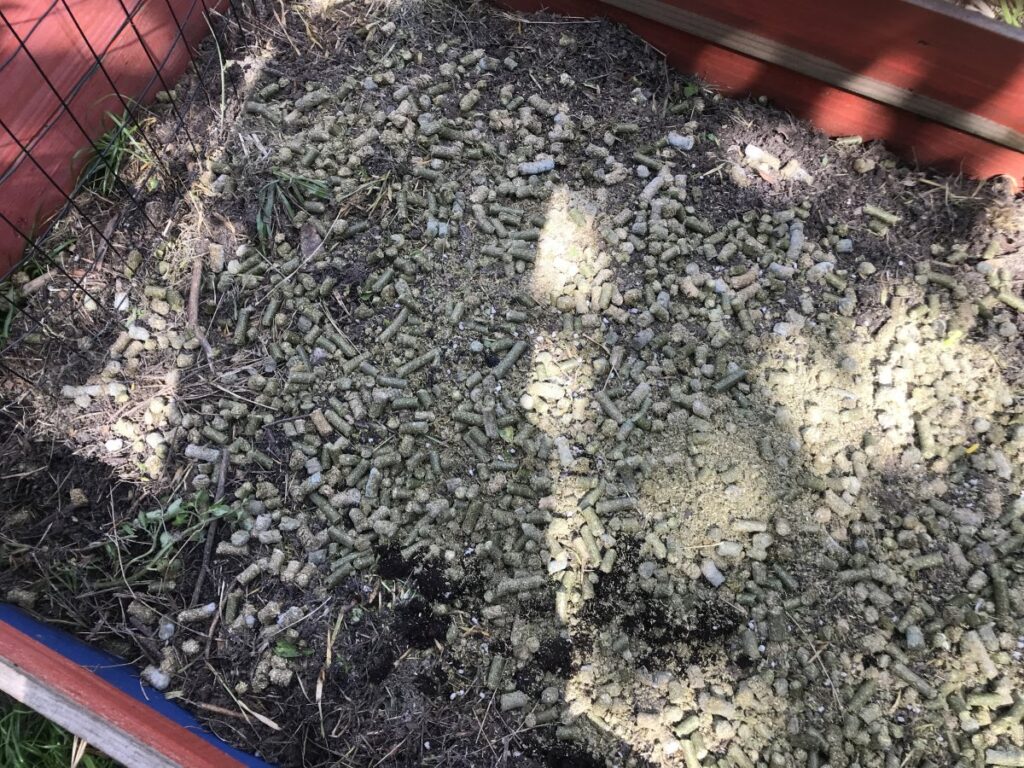
I use pelleted alfalfa, sold for cattle and horses, at my local feed store. I like the Standlee brand in either organic or non-organic. The upside is that we can also feed it to our rabbits. For smaller areas and container plants, Down to Earth and Espomo both deliver quality organic products.
Do check around and find a feed store near you to source alfalfa meal or pellets for gardening. You’ll spend half as much and most likely you’ll be supporting a small business in your community.
Kitty Litter
Yes, kitty litter — basically, clay.
If you live in an area with heavy, cloying, clay soil, you definitely don’t want to add more. However, I live about a mile off Tampa Bay, and our sandy soil drains quickly. Many thirsty plants can’t drink deep enough before it filters through.
I started adding plain, scentless kitty litter to the soil last spring and the results were truly remarkable. I found that I didn’t have to water every single day just to keep things from wilting.
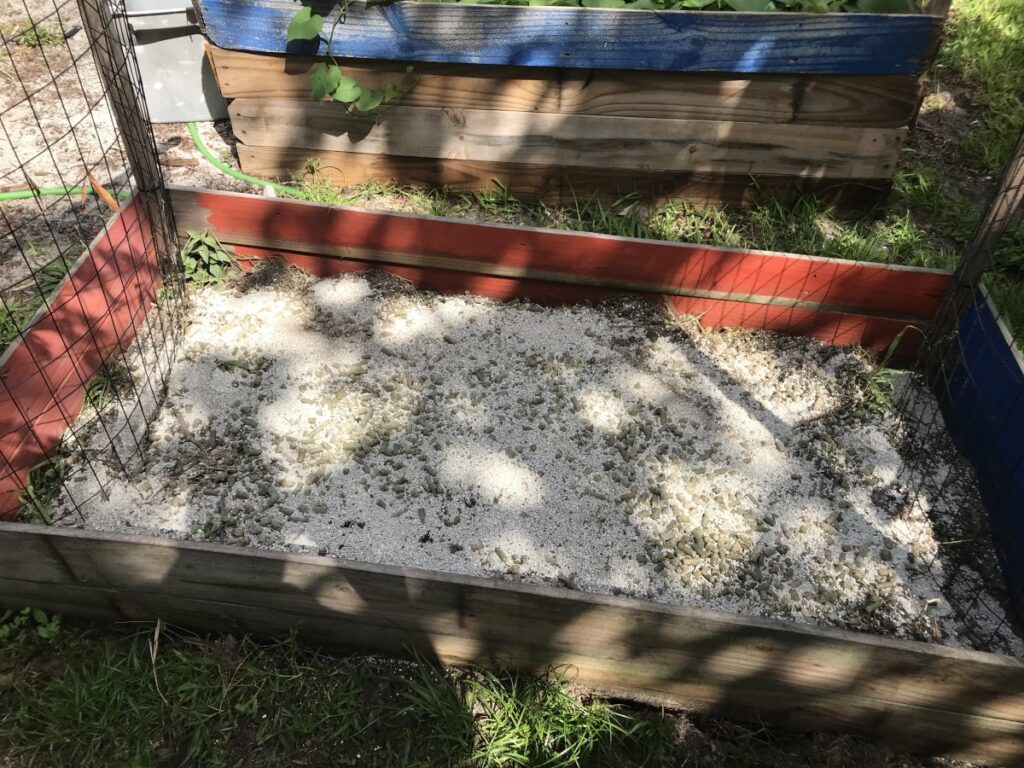
I also added a small dose of Epsoma Bio-Tone Starter. While there is plenty of organic matter going into this bed, Bio-Tone contains beneficial fungi and bacteria to assist in plant growth.
Because it’s the rainy season, and because bacteria and fungi grow pretty prolifically on their own in this climate, I just added a small bit to innoculate the soil and get it started.
Compost
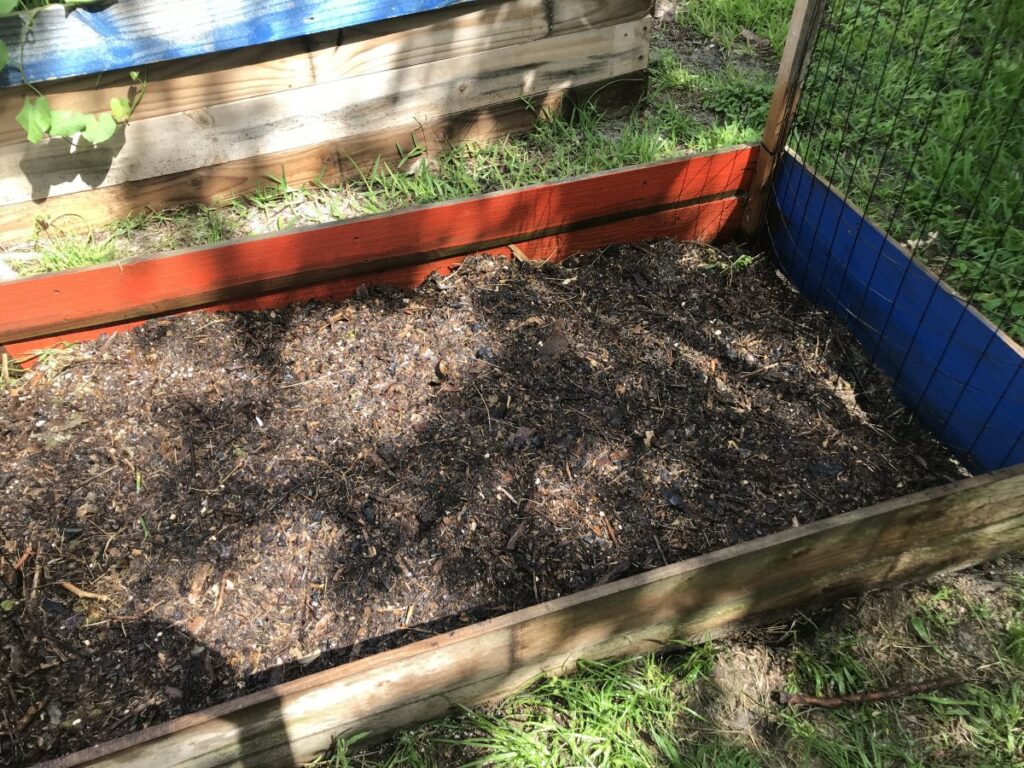
Over the last three years, composting has become something of a sacred mission in our house. Family members come to me with food scraps and ask me where to place their offerings.
Then, we got a paper shredder! Saturday nights are a blast now!
Composting is the single most effective way to feed your garden and reduce your carbon footprint.
My Summer Cover Crops
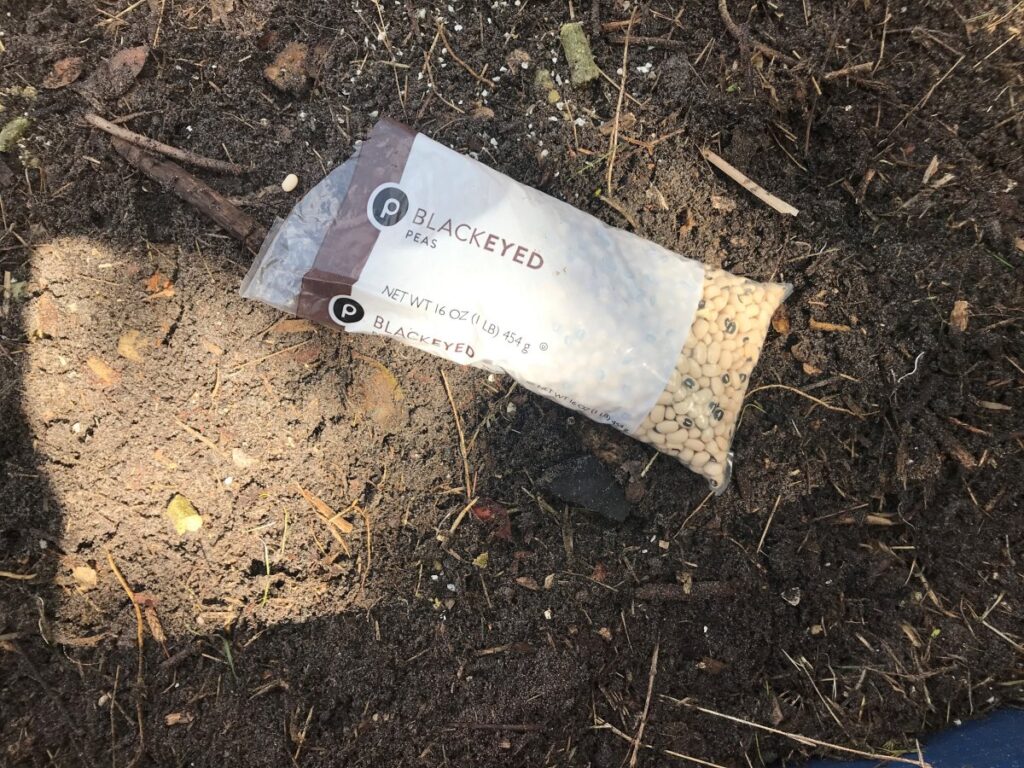
Yep, a cheap bag of black-eyed peas from Publix!
Last year, I planted Cowpeas that I got from the garden center in a Ferry Morris or Burpee package. They cost me about $5 and I only had enough for a small area of my garden. They grew well. The aphids LOVED them. I did not.
So, this year, I spent $1.50 on a bag of black-eyed peas from the grocery store. That way, I won’t have to feel guilty if don’t eat any of them.
More Compost, Plus Biochar
There is no such thing as too much compost.
This layer of compost also includes some biochar I made that has been charging for about two months.
Hay There!
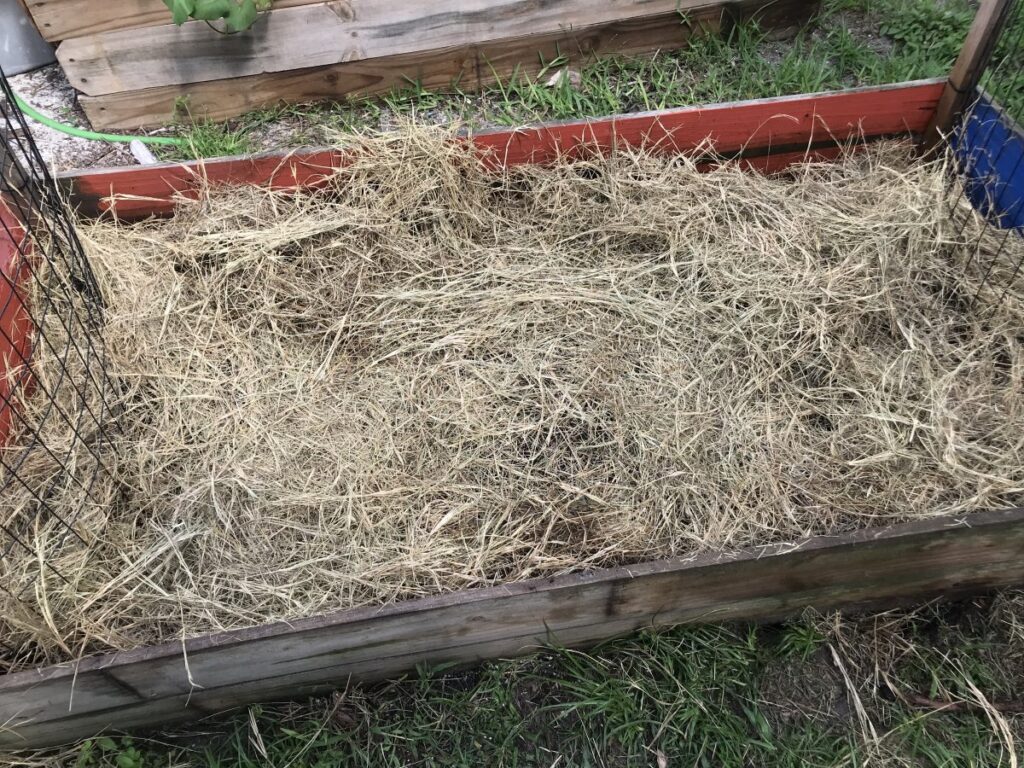
I watered everything in well and dropped a light covering of hay to keep the soil cool, retain moisture, and try to fool the squirrels.
There has been a lot of controversy about the use of hay and straw in the garden. More specifically, gardeners are finding that some of the hay they’re sourcing has been sprayed with the herbicide Grazon or aminopyralid.
Apparently, there is no killing this stuff! If you put it on your garden as a mulch, it will kill everything you grow there for years.
If you buy manure from horses or cows that have eaten hay sprayed with aminopyralid, it too will kill everything you use it on for years.
I’ve been lucky so far. But, I’ve also been careful.
According to No-Dig Guru, Charles Dowding, you can test for this contaminant in any hay, straw, manure, or compost you buy before destroying your garden:
Time to Chill
From now until I plant out starts in September, I don’t have to think about that garden bed. No watering, no weeding, no cares, no worries. I’ve finally learned to stop worrying and love the summer.
According to experts at the University of Florida, Institute of Food and Agricultural Sciences, other good summer cover crops for Florida and other Gulf Coast areas include legumes like Indian jointvetch, cowpeas, hairy indigo, sun hemp, and velvet beans. You can also use grain plants like sorghum and sudangrass, if you’re also looking for a huge amount of biomass at the end.
Whichever way you choose to chill this summer, feel free to give your garden a summer vacation without guilt. After all, unlike most of the U.S., we can garden all the way through the other months of the year.



